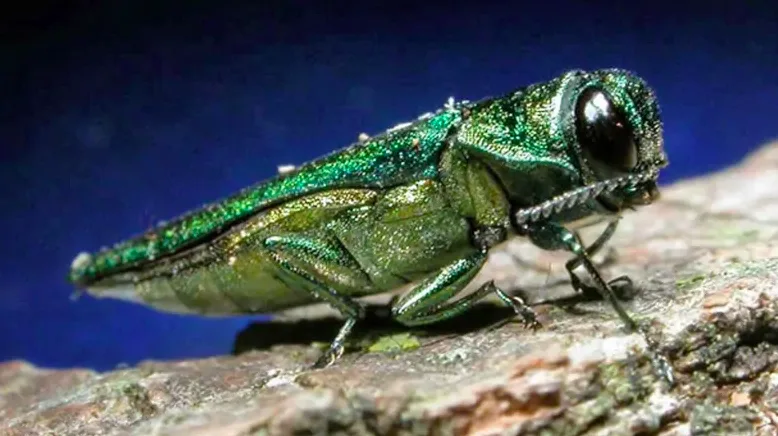
Emerald ash borer infestation in Bedford, N.S., worse than previously believed
The emerald ash borer is proving to be a greater threat to ash trees in the Halifax area than expected.
Crispin Wood, the superintendent of urban forestry for the municipality, says it was originally believed the ash borer was only present in the DeWolf Park and Waterfront Drive areas of Bedford. But careful monitoring efforts have now determined the pest is "pretty well all through Bedford."
He says DeWolf Park-Waterfront Drive is "ground zero" of the infestation and has the highest tree mortality rate so far.
"As you move out from ground zero where the beetle was first identified, the damage is less and less," Wood said in an interview this week. "But over the next couple of years, you'll start to see more and more trees start to fail."
The emerald ash borer is an invasive, tree-destroying beetle originally from Asia and first discovered in Nova Scotia in 2018.

The emerald ash borer is an invasive species from Asia that was first discovered in Nova Scotia in 2018. (Minnesota Department of Natural Resources)
The pest poses a major economic and environmental threat to urban and forested areas of North America, and has caused five of Canada's ash species to be listed as critically endangered.
Because there is no proven way to stop the progression of the pest, and it has no natural predators in North America, Wood said this is a serious issue for Halifax Regional Municipality.
"We know that between five to seven per cent of the tree canopy here in HRM is ash," he said. "So certainly that is concerning, and to a degree heartbreaking."
The original strategy in Bedford was to cut down ash trees as soon the tell-tale "V-shaped insect exit hole" was discovered. Wood said this strategy did not actually slow the infestation rate.
"Unfortunately, at that time, we weren't aware that the population was so large that we really didn't have much of an impact at all," Wood said.
Now, the strategy is to wait until a tree becomes a danger of falling, at around "75 per cent mortality," then remove it. Wood said it could take a few years for a tree to reach this point from first signs of infestation, because the beetle seems to progress more slowly in this part of the country than others.

A tree infected by the emerald ash borer in DeWolf Park is shown. (Robert Short/CBC)
A key part of the new strategy is to replace the infected trees with a diverse array of tree species.
Wood said an increasing number of pests and diseases are impacting many different tree species, so it is important to plant a variety of trees in case one type becomes threatened.
The disappearance of ash trees in HRM as the insect spreads throughout the area will not be a small loss, said Doug van Hemessen, the Nova Scotia stewardship co-ordinator for the Nature Conservancy of Canada.
The eradication of a native species of tree from an area can have ripple effects through the whole ecosystem, from nesting birds to other species of trees, he said.
One way to slow the spread of the emerald ash borer and similar pests is through public awareness.
"We know one of the main ways that some of these insects get around is by people, typically from moving firewood or other wood products," van Hemessen said.
Though the spread of the insect cannot be stopped, everyone can do their part in slowing it by burning firewood on site and reducing the movement of any wood products out of HRM.
Original story by Nicola Seguin, published on CBC.ca










